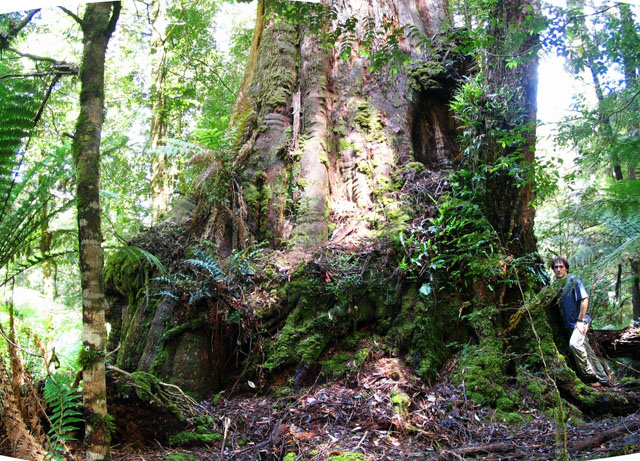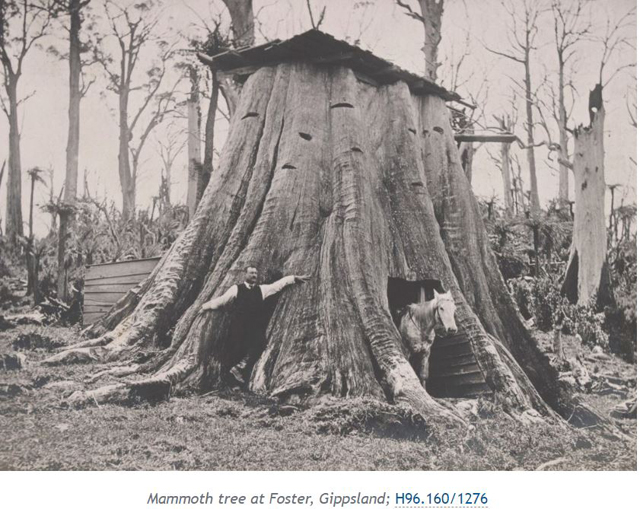Another significant overseas visitor who travelled across Kentish’s high country as early as 1841 was renowned Polish scientist Count Paul Strzelecki. Again we ask who were this first international visitor and what was he doing in our Kentish terrority? Born in 1797, Paul Strzelecki was a Polish nobleman who was bequeathed a fortune as a young man. The Count left Poland in 1829 because of Prussian control and spent some time in France, before settling in England to pursue his passion for science. Then he began travelling widely in the USA and Canada (1834 & 1835), South America (1836), during which time he walked from Chile back to California. After visiting some Pacific islands, Strzelecki arrived in Sydney on 25 April 1839 with his new scientific instruments.
Invited to VDL by Lady Jane Franklin. Six weeks later on 7 June 1839 Strzelecki dined at Government House, Sydney as a guest of Sir George Gipps, Governor of New South Wales. Also present at this meal was Lady Jane Franklin, wife of the Lieutenant-Governor of Van Diemen’s Land who was an enthusiastic supporter of the emerging sciences. Governor Gipps requested Strzelecki to undertake a geographical and geological survey of NSW (which at that time included all Victoria), while Lady Jane insisted, he must also visit Van Diemen’s Land.
With two white men and two aboriginal guides, Strzelecki began his 2000-mile journey around South East Australia mapping the whole region and studying its geology. On 12 March 1840, after a meal of lyrebird in the Snowy Mountains, Strzelecki hauled his barometrical instruments to the top of Australia’s highest mountain and named Mount Kosciuszko after one of Poland’s national heroes.
Count‘s Two Years Stay in Van Diemen’s Land. Strzelecki arrived in Van Diemen’s Land on 25th July 1840 as a guest of Sir John and Lady Jane Franklin, who offered him every help in his scientific investigations around the island. Over the next two years Strzelecki explored nearly every part, usually on foot with a couple of helpers and their pack horses.
He accomplished important work as an explorer, geologist, scientific agriculturalist, including the recording of barometrical measurements. Count Strzelecki discussed with Sir John the devastating effects of the severe drought of 1841. He suggested our island was ideally suited for the development of irrigation systems such as he had seen in the USA. He discovered many coal deposits and truly believed that gold was here waiting to be discovered. In Launceston Strzelecki established his laboratory in Dr William Pugh’s house where he concentrated on conducting soil experiments and making an enormous geological map. Together with Governor Franklin, Strzelecki established the Tasmanian Society of Natural Sciences and the magazine Tasmanian Journal.
Of special interest to us is Count Strzelecki‘s westward journey over the Great Western Road to visit the various VDL Co land grants. With Dan Pickett proprietor of the Chudleigh Inn as guide, the Count and his helpers made this formidable journey in February, 1841. Always in fear of his precious scientific instruments being broken, they were carried by two pack horses up and down those tortuous hills behind Mount Roland. They included two aneroid mountain barometers and special apparatus for ascertaining the boiling point of water at various altitudes.
Strzelecki Shelters Two days in a Hollow Tree At the Middlesex Plains, the Count encountered such bad weather that he and his party were obliged to spent two nights sheltering in a very large hollow tree. It was located near Bull Creek, about ¾ mile (or 1.3kms) before reaching the Weaning Paddock Creek. The entrance into the hollow tree was large enough to ride a horse through. The cavity inside measured 13 feet (4 metres) across.
Over many decades Field‘s stockmen and travellers along this road to Cradle Mountain made this tree a kind of living memorial to the famous Count‘s stop-over in their terriority.
Eventually arriving at Hampshire Hills, the Count presented the Company manager Edward Curr with his list of heights above sea levels taken along the VDL Co track. These measurements included: Mersey River at Liena 1012 feet, Gad’s Hill 2588 feet, Epping Forest 2957 feet, Middlesex Plains 2709 feet, Vale of Belvoir 2930 feet, range behind Black Bluff (above Vale of Belvoir) 3381 feet and Hampshire Hills 1346 feet.
Impressed, Curr wrote to his Company headquarters in England on 2 March 1841:
“A learned Polish geologist, Count Strzelecki, who has been 10 years on his travels from Europe, arrived here a few days ago. He has seen more of NSW and VDL than any other man and provided us with some valuable information…. He has an instrument with him that can read the altitude of the various blocks held by the VDL Co and for the first time we have discovered the extraordinary up and down of the Great Western Road”.
Curr concludes: “It is the elevation, more than anything else that diminishes the value of these districts, the soil being otherwise encouraging. This fact, as I have ever stated, is the chief reason for our want of success.”
The Count‘s Awards and Honours. Interestingly enough, when Strzelecki returned the horse lent to him by the Government, it was almost immediately selected by Surveyor N L Kentish who began his exploratory survey for a better road to the North West Coast the following year.

Strzelecki left Tasmania on 29 September 1842 by steamer for Sydney, on his return journey to England. There in 1845 he published his book entitled A Physical Description of NSW and Van Diemen’s Land, containing some sixty pages on the geology and soil analysis of agricultural land throughout Van Diemen’s Land.
He became a naturalised British subject and was awarded an honorary degree from the University of Oxford, a Companion of the Order of the Bath (CB), and a Knight Commander of the Order of St Michael and St George (KCMG) in 1869.
Strzelecki died in 1873 in London of liver cancer and was buried in Kensal Green Cemetery. In 1997 his remains were transferred to the crypt of St. Wojciech Church in his home town of Poznań, Poland. Australia honoured him in 1983 by depicting his portrait on a postage stamp.
What happened to Strzelecki’s Famous Tree?. Note taken from the minutes of Cradle Mountain Board 12 Nov 1936 reads:
“It was with regret that we recorded the destruction of ‘The Count’s Tree’, a large tree beside the road to Cradle Mountain in which Count Strzelecki sheltered when he passed through the district 95 years ago. About two years ago a bush fire damaged the tree severely, killing one side, and subsequent decay caused the tree to fall couple of months ago.”
Because of continuing interest from visitors, another huge hollow tree nearby was selected to demonstrate how the Count sheltered during his two days of stormy cold weather. It was an old white-topped stringy-bark right on the verge of the road about 3 chains (60 metres) west of the Weaning Paddock Creek. The tree was just as large as the other, but its hollow cavity was somewhat smaller. For around a century and half these two trees served as a memorial to the famous Count’s forced stopover within Kentish’s high country back in 1841.
Just over a hundred years later, in March 1945 the Warden of Kentish, Cr Percy Williams and my father Aubrey Dyer as council clerk were hosts of a visit to Cradle Mountain by the Governor of Tasmania Sir Ernest Clark. The Governor took a real interest in Count Strzelecki’s tree and insisted on inspecting its interior. The following year, it was the same with the new Governor and his wife, Sir Hugh and Lady Binney when they also visited Cradle Mountain.

But after the Second World War when the Middlesex Plains was first wood chopped, shoe holes were cut up each side of this famous tree and its massive top taken off 20 feet above the ground. That didn’t hinder tourists from stopping to look inside it. But sadly, during the widening and sealing of road to Cradle Mountain in 1976, despite the protests of tour operators like Dennis Maxwell of Wilmot, the historic old tree was bulldozed out of existence.
Alan Dyer OAM
Source: www.alandyerbooks.com/1841-notable-travellers-on-the-great-western-road-count-paul-strzelecki-13/
https://www.zrobtosam.com/PulsPol/Puls3/index.php?sekcja=1&arty_id=22649



